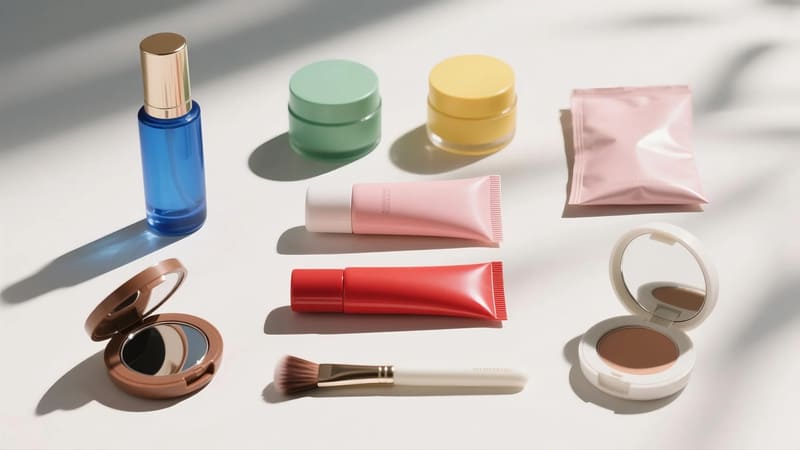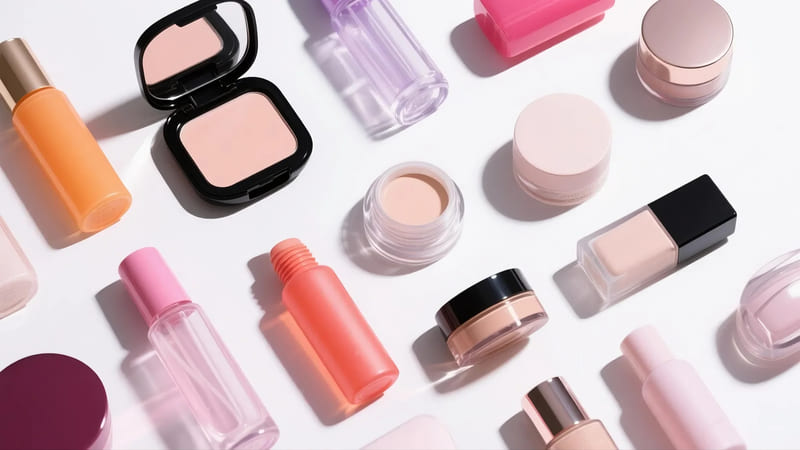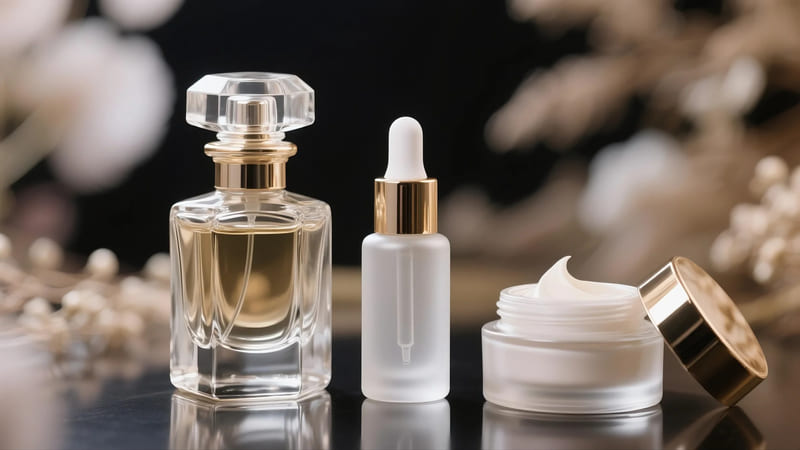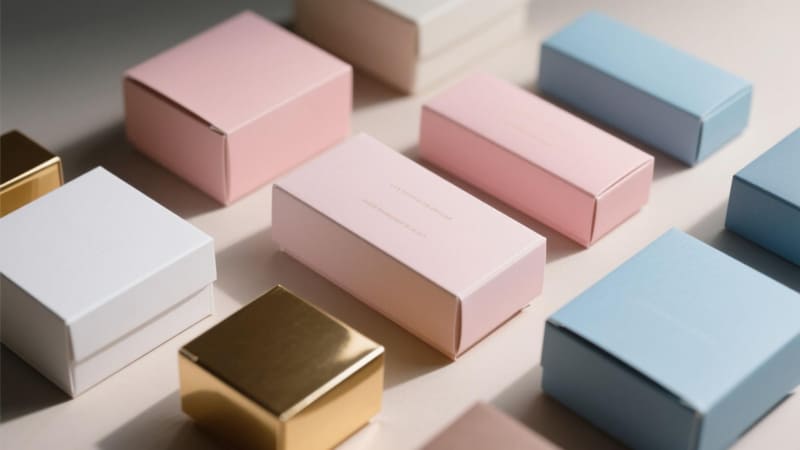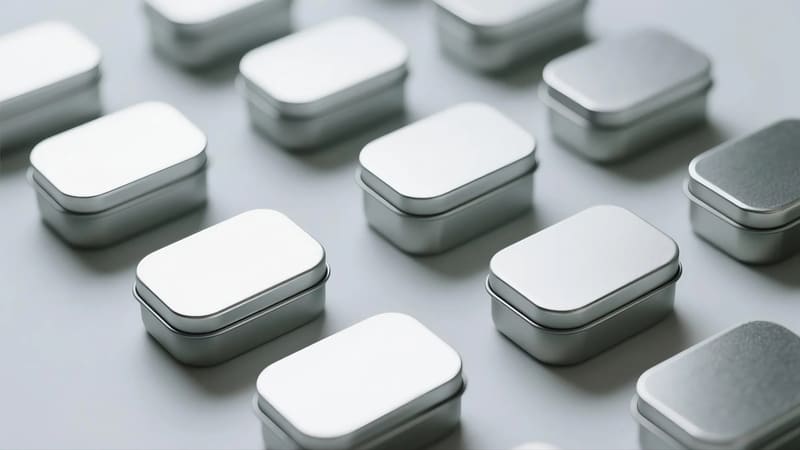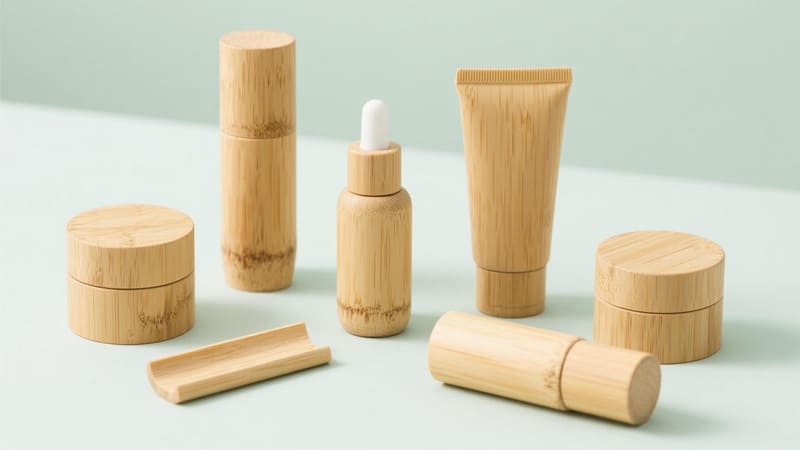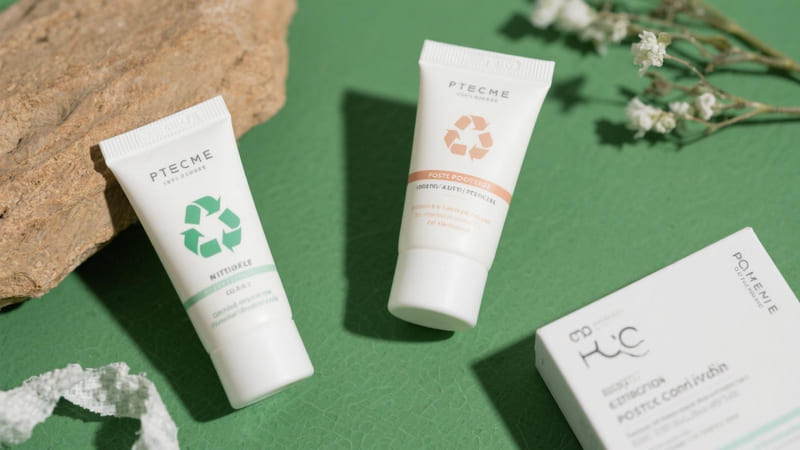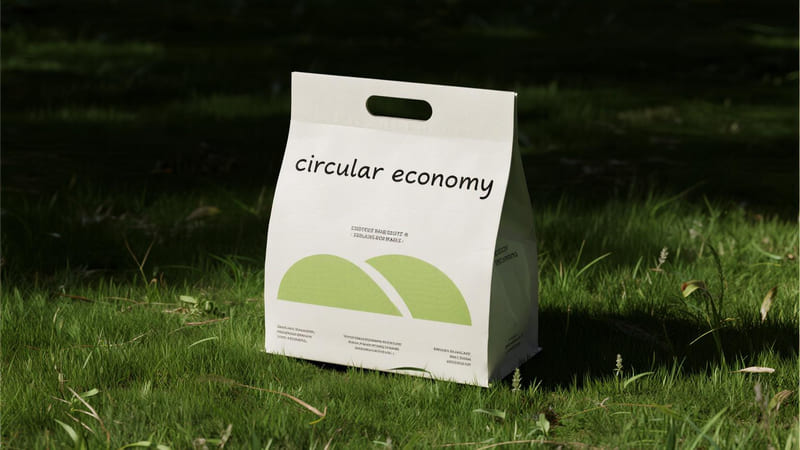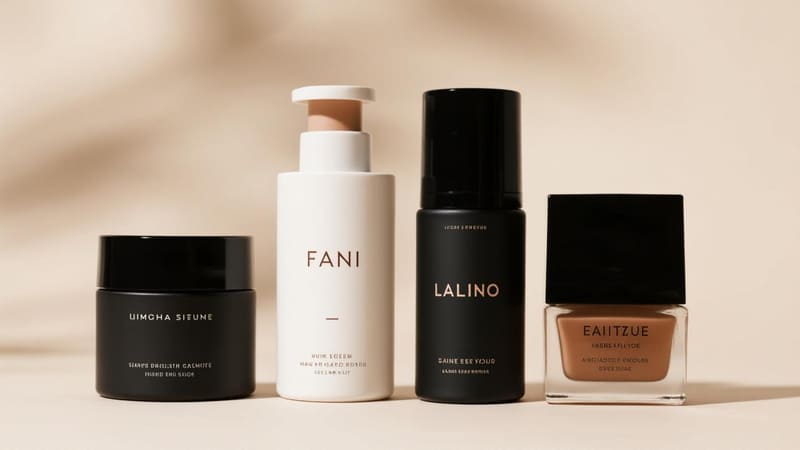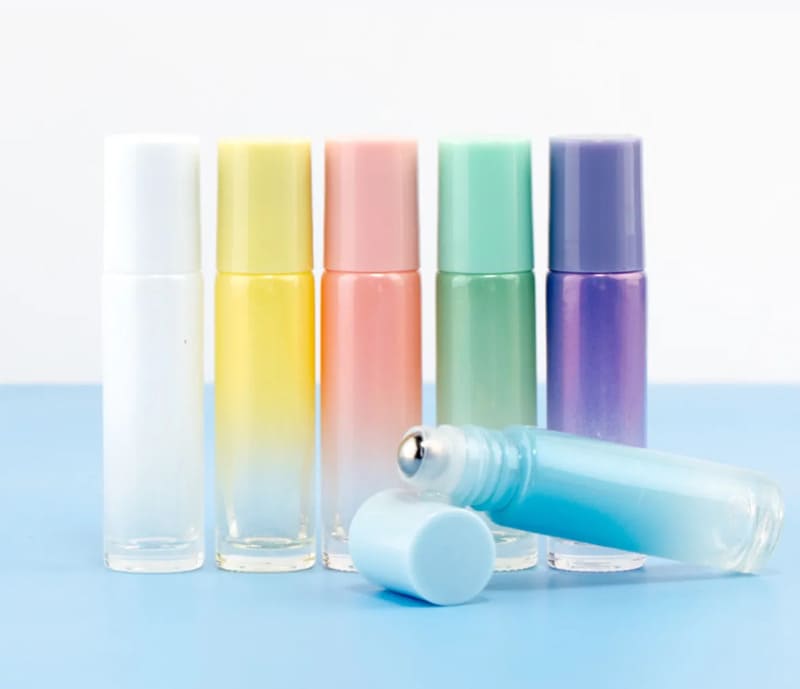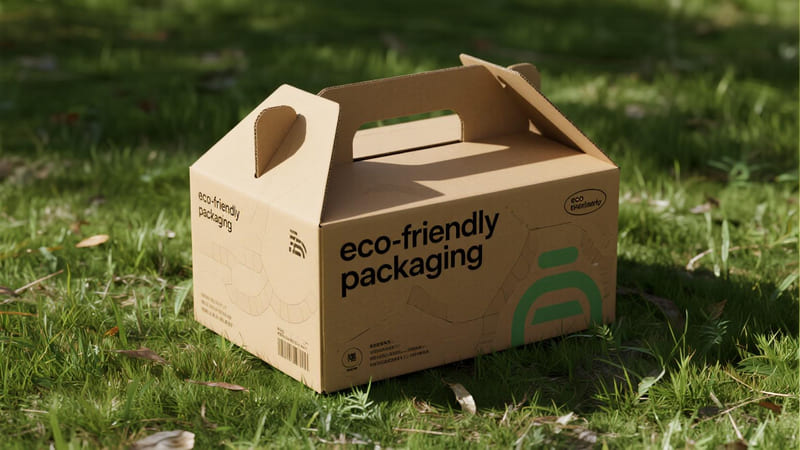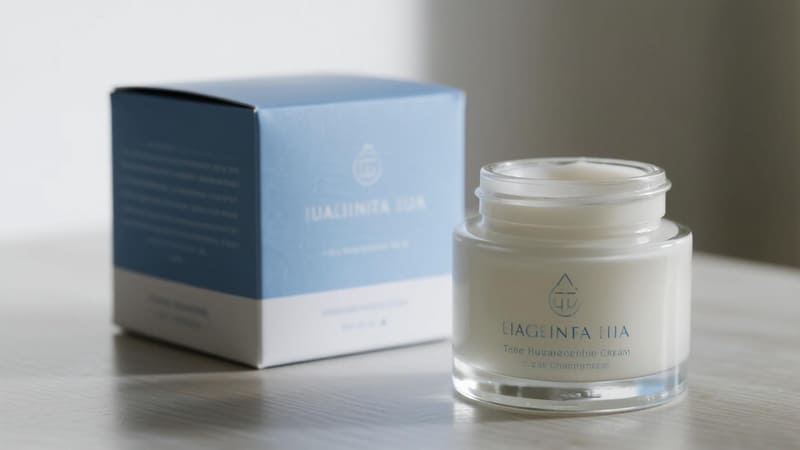The world of cosmetic packaging is a dazzling display of creativity and functionality, with materials carefully chosen to protect precious formulas, convey brand identity, and entice consumers. While many materials are used, a select group consistently dominates the landscape due to their unique properties and versatility.
The 7 popular materials in cosmetic packaging are: 1. Plastics (PET, PP, PE, HDPE, LDPE, Acrylic/PMMA, SAN), 2. Glass, 3. Paper & Paperboard, 4. Aluminum, 5. Tinplate (Steel), 6. Bamboo & Wood, and 7. PCR (Post-Consumer Recycled) versions of plastics, glass, and metals, reflecting a growing sustainability focus.
As a global packaging manufacturer with ShineTop for over two decades, I’ve worked extensively with these materials, understanding their strengths, limitations, and how they can be best utilized to create stunning and effective cosmetic packaging. Let’s delve into these seven popular choices.
1. Plastics (PET, PP, PE, HDPE, LDPE, Acrylic/PMMA, SAN)
Plastics are arguably the most versatile and widely used material group in cosmetic packaging due to their lightweight nature, durability, cost-effectiveness, and immense design flexibility.
Plastics like PET (clarity, good barrier), PP (chemical resistance, jars/caps), PE (HDPE for sturdy bottles, LDPE for squeezable tubes), Acrylic/PMMA & SAN (glass-like clarity, premium feel) are staples for bottles, jars, tubes, compacts, and closures. Their adaptability allows for a vast range of shapes, sizes, and dispensing options.
Key Plastic Types & Their Uses:
- PET/PETE (Polyethylene Terephthalate):
- Properties: Excellent clarity (often used as a glass alternative), good strength, good barrier to oxygen and moisture, lightweight, highly recyclable (#1).
- Common Uses: Bottles for lotions, serums, toners, micellar water, some jars.
- PP (Polypropylene):
- Properties: Good chemical resistance, good moisture barrier, higher heat tolerance, good fatigue resistance (for hinged caps), can be clear (clarified PP) or opaque. Recyclable (#5, check local).
- Common Uses: Jars for creams and balms, caps and closures, airless pump components, some bottles.
- PE (Polyethylene) – HDPE & LDPE:
- HDPE (High-Density Polyethylene): Rigid, strong, excellent moisture barrier, often naturally translucent/milky but can be colored. Recyclable (#2).
- Uses: Bottles for shampoos, conditioners, body washes.
- LDPE (Low-Density Polyethylene): Very flexible and squeezable, good moisture barrier. Recyclable (#4, often in specific streams).
- Uses: Squeezable tubes for creams, lotions, gels, cleansers.
- HDPE (High-Density Polyethylene): Rigid, strong, excellent moisture barrier, often naturally translucent/milky but can be colored. Recyclable (#2).
- PMMA (Acrylic) & SAN (Styrene Acrylonitrile):
- Properties: Offer superior, glass-like clarity and a more premium, weighty feel than basic plastics.
- PMMA (Acrylic): Excellent transparency, high gloss.
- SAN/AS: Good clarity, stiffness, good chemical resistance.
- Common Uses: Luxury jars, thick-walled bottles, high-end compacts, outer layers of double-walled jars.
- Recyclability: More challenging (#7 Other).
ShineTop offers a vast array of these plastic options, including an increasing focus on sustainable versions.
2. Glass
Glass has a long and storied history in cosmetic and perfume packaging, prized for its premium aesthetic, inertness, and protective qualities.
Glass is a popular luxury material for cosmetic packaging, especially for high-end skincare (serums, creams), foundations, perfumes, and nail polish. It’s chemically inert (protecting formula integrity), provides an excellent barrier, is infinitely recyclable, and offers a weighty, premium feel. It can be clear, frosted, or colored.
Advantages of Glass:
- Premium Look & Feel: Conveys luxury, quality, and sophistication. Its weight and clarity are highly valued.
- Chemical Inertness: Does not react with cosmetic formulations, ensuring product purity and stability. Ideal for sensitive ingredients.
- Excellent Barrier Properties: Impermeable to gases and moisture, protecting against oxidation and contamination, thus extending shelf life.
- Transparency (or Colorability): Allows product visibility or can be colored (amber, cobalt blue, opaque black/white) to protect light-sensitive formulas.
- Recyclability: 100% recyclable without loss of quality or purity.
- Temperature Resistance: Can withstand reasonable temperature variations.
Common Uses: Perfume bottles, nail polish bottles, dropper bottles for serums and oils, jars for creams and masks, foundation bottles.
ShineTop is a major manufacturer of cosmetic glass, and our largest bottle post-processing facility in South China allows for extensive customization like coating, frosting, silk-screen printing, and hot stamping on glass.
3. Paper & Paperboard
While not typically used for primary containment of liquid or cream cosmetics, paper and paperboard are indispensable for secondary packaging (boxes), labels, and inserts, playing a crucial role in branding and information delivery.
Paper and paperboard (such as SBS, CUK, Kraft, or recycled board) are predominantly used for secondary cosmetic packaging like folding cartons (boxes) and luxury rigid boxes. They offer excellent printability for branding, structural versatility, a good sustainability profile (if sourced responsibly), and can be enhanced with numerous decorative finishes.
Role of Paper & Paperboard:
- Secondary Packaging (Boxes):
- Folding Cartons: The most common type of cosmetic box, made from paperboard grades like SBS (Solid Bleached Sulfate) for a smooth, white print surface, CUK (Coated Unbleached Kraft) for strength, or recycled paperboard.
- Rigid Boxes (Set-Up Boxes): Used for luxury items and gift sets, made from thick greyboard overwrapped with specialty papers.
- Labels: Paper labels are common on bottles and jars.
- Inserts & Leaflets: Provide additional product information.
- Sustainability: FSC-certified paper ensures responsible sourcing. Recycled paperboard reduces virgin material use.
- Printability & Finishes: Ideal canvas for high-quality printing, foil stamping, embossing, debossing, and various laminations/coatings.
Anna, a cosmetics client of ours in Thailand, uses FSC-certified paperboard boxes with minimalist printing for her natural skincare line, perfectly reflecting her brand’s ethos.
4. Aluminum
Aluminum is a lightweight, versatile metal that offers excellent protection and a modern, sleek aesthetic, making it popular for certain types of cosmetic packaging.
Aluminum is commonly used in cosmetic packaging for collapsible tubes (creams, ointments, hair dyes), aerosol cans (hairsprays, dry shampoos), tins (lip balms, solid perfumes), and premium components like caps, collars, or decorative plaques on bottles and jars. It provides an excellent barrier, is lightweight, and highly recyclable.
Benefits & Uses of Aluminum:
- Excellent Barrier: Provides a near-perfect barrier to light, oxygen, moisture, and contaminants, protecting sensitive formulas.
- Lightweight: Reduces shipping costs compared to glass or steel.
- Durable & Malleable: Can be formed into various shapes (tubes, cans, custom components) and is shatterproof.
- Collapsible Tubes: Prevent air suck-back, minimizing contamination and allowing for almost complete product evacuation. Often internally lacquered for compatibility.
- Aerosol Cans: Standard for products requiring propellant-based dispensing.
- Premium Feel: Can offer a sleek, modern, or sometimes vintage metallic look.
- High Recyclability: Aluminum can be recycled repeatedly with significant energy savings compared to virgin production.
5. Tinplate (Steel)
Tinplate, which is steel electroplated with a thin layer of tin, is another metal used in packaging, known for its strength and traditional appeal, though less common than aluminum for primary cosmetic containers today.
Tinplate (tin-coated steel) is used in cosmetic packaging primarily for creating durable tins (for balms, waxes, solid perfumes, candles), some types of closures, and occasionally for decorative outer containers or gift sets. It’s strong, offers good protection, and has a classic, often vintage, appeal.
Characteristics of Tinplate Packaging:
- Strength & Durability: More robust and less prone to denting than thinner aluminum for certain applications.
- Good Barrier Properties: Offers good protection once sealed.
- Printability: Can be directly printed with vibrant graphics.
- Classic/Vintage Aesthetic: Often associated with traditional balms, salves, or pomades.
- Recyclability: Steel is widely recycled.
While aluminum has become more prevalent for many applications due to its lighter weight, tinplate still holds a niche for its specific strengths and aesthetic.
6. Bamboo & Wood
Reflecting the growing trend towards natural and sustainable aesthetics, bamboo and wood are increasingly popular for adding an organic, premium touch to cosmetic packaging, usually as components rather than full containers for liquids.
Bamboo and sustainably sourced wood are used in cosmetic packaging for components like caps, lids, outer casings for lipstick tubes or compacts, or even entire jars (often with a compatible inner liner). They offer a unique, natural, tactile, and eco-friendly appeal, conveying warmth and craftsmanship.
Appeal of Bamboo & Wood:
- Natural Aesthetics: Provides an earthy, organic, and often luxurious look and feel.
- Sustainability (if sourced responsibly):
- Bamboo: A fast-growing, highly renewable grass that requires minimal resources.
- Wood: Can be sustainable if sourced from FSC-certified forests.
- Tactile Experience: Offers a warm, natural touch compared to plastic or metal.
- Uniqueness: Can be carved, engraved, or finished in various ways to create distinctive designs.
- Brand Alignment: Perfect for brands emphasizing natural, organic, or artisanal qualities.
Common Uses: Lids and caps for glass or plastic jars and bottles, outer shells for lipstick cases or compacts, entire containers for solid perfumes or balms (often with a plastic or glass inner liner to ensure product compatibility and prevent leakage). ShineTop has developed many beautiful bamboo and wood components for eco-conscious brands.
7. PCR (Post-Consumer Recycled) Materials
Driven by the urgent need for sustainability, PCR versions of traditional materials (plastics, glass, aluminum, paper) are rapidly gaining popularity and becoming a category in their own right.
PCR (Post-Consumer Recycled) materials – plastics (rPET, rPE, rPP), glass (recycled cullet), aluminum, and paper/paperboard – are increasingly popular for cosmetic packaging. Using PCR content reduces reliance on virgin resources, diverts waste from landfills, lowers carbon footprint, and supports a circular economy.
Importance of PCR Materials:
- Reduces Virgin Resource Depletion: Lessens the need to extract new fossil fuels (for plastics) or raw materials (for glass, metal, paper).
- Lowers Carbon Footprint: Processing recycled materials typically requires less energy than producing virgin materials.
- Diverts Waste from Landfills & Oceans: Gives existing waste a new life.
- Supports Circular Economy: Creates demand for recycled materials, strengthening recycling infrastructure.
- Meets Consumer Demand: Consumers are increasingly looking for brands that use recycled content.
Availability:
- PCR PET (rPET): Widely available for bottles and jars, can achieve good clarity.
- PCR HDPE (rHDPE) & PCR PP (rPP): Increasingly common for bottles, tubes, jars, and caps.
- Recycled Glass: Standard practice in glass manufacturing to include cullet.
- Recycled Aluminum: Common in can production.
- Recycled Paperboard: Widely used for cosmetic boxes.
ShineTop is a strong proponent of PCR materials, offering various PCR plastic options (PET, PE, PP) and FSC-certified recycled paperboard to help our clients meet their sustainability goals without compromising on quality or aesthetics.
Conclusion
The seven popular materials in cosmetic packaging – plastics, glass, paper/paperboard, aluminum, tinplate, bamboo/wood, and increasingly, their PCR counterparts – each offer a unique blend of functional, aesthetic, and (now more than ever) sustainable properties. The best choice for a brand depends on a careful consideration of the product formulation, target audience, brand identity, budget, and a commitment to minimizing environmental impact. By understanding these materials, brands can create packaging that truly resonates and performs.

